The Importance of User-Friendly Website Design in Today’s World
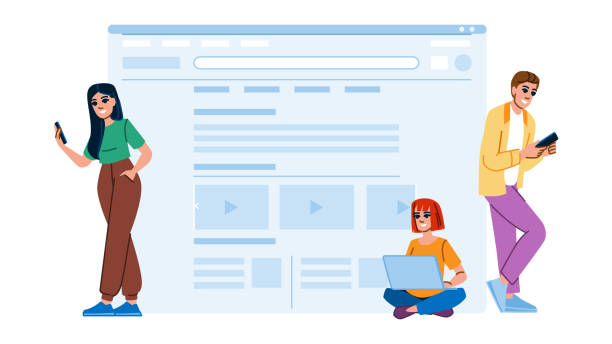
In the current digital age, where competition for attracting and retaining audiences has reached its peak, user-friendly website design is no longer an advantage; it is a necessity.
A website with excellent #User_Experience (UX) and a visually appealing #User_Interface (UI) not only attracts users but also encourages them to stay and interact more.
Unfriendly websites quickly lead to dissatisfaction and abandonment by visitors, resulting in high bounce rates and decreased online credibility.
When a user visits your site, they decide in a fraction of a second whether to continue their search or not.
This critical moment doubles the importance of optimal design and focusing on user needs.
A well-designed website provides information easily to the user, has easy navigation, and ultimately offers a satisfying experience.
This directly impacts your business’s success, conversion rates, and even SEO (Search Engine Optimization).
Investing in user-friendly website design means investing in the future of your business.
Are your e-commerce site visitors leaving before making a purchase? Don’t worry anymore! With Rasaweb’s professional e-commerce website design services, solve the problem of not converting visitors into customers forever!
✅ Significantly increase conversion rates and sales
✅ Unique and engaging user experience
⚡ Contact us now for a free consultation!
Key Principles of User-Friendly Website Design

To create a truly user-friendly website, adhering to fundamental principles throughout all design stages is of utmost importance.
The first and most important principle is intuitive and simple navigation.
Users should be able to easily access different sections of the site without any confusion.
Clear menus, logical internal links, and an efficient sitemap are the cornerstones of this principle.
The second principle is design consistency.
Using consistent fonts, colors, and layouts across different pages gives users a sense of familiarity and comfort.
This consistency also helps in branding and creating a strong visual identity.
The third principle is clear visual hierarchy.
More important elements should be highlighted to attract the user’s attention, such as larger headings, distinct Call to Action (CTA) buttons, and key images.
Additionally, clear and visible Calls to Action (CTAs) guide users towards desired actions, whether it’s signing up or purchasing a product.
Finally, immediate feedback to the user (such as form submission confirmation or error messages) is essential for building trust and confidence.
Implementing these principles is the foundation of a user-friendly website design that creates a positive experience for visitors and encourages them to return.
The Role of Speed and Responsiveness in User Experience

In today’s world where speed is paramount, nothing is more annoying to a user than a slow website.
Website loading speed directly impacts user experience, bounce rate, and even site ranking in search engines.
According to research, many users abandon a site if it doesn’t load within three seconds.
To ensure a user-friendly website design, speed optimization is a critical step.
This includes image compression, caching, optimizing CSS and JavaScript codes, and using Content Delivery Networks (CDNs).
In addition to speed, Responsive Design is also crucially important.
Given the increasing use of mobile devices to access the internet, your website must automatically adapt to different screen sizes.
A responsive website provides a seamless and optimized user experience on any device, from desktops to tablets and smartphones.
This is not only essential for user satisfaction, but Google also prefers responsive websites in search rankings.
In the table below, you can see the impact of loading speed on user experience and related tools:
| Speed Metric | Impact on User Experience | Evaluation/Optimization Tools |
|---|---|---|
| Full Load Time | Increased Bounce Rate, decreased user satisfaction, negative impact on SEO | Google PageSpeed Insights, GTmetrix |
| First Contentful Paint (FCP) | User’s first impression of site speed, impact on user patience | Lighthouse, WebPageTest |
| Largest Contentful Paint (LCP) | Represents the loading time of main content and the most impactful visual element on the page | Chrome DevTools, Semrush Site Audit |
| First Input Delay (FID) | Site’s responsiveness to user interactions (clicks, scrolls), impact on sense of responsiveness | Google Search Console (Core Web Vitals report) |
Paying attention to Core Web Vitals, which are Google’s main metrics for evaluating page experience, can be a great guide for optimizing your website’s performance.
User-Centric Content and Information Architecture
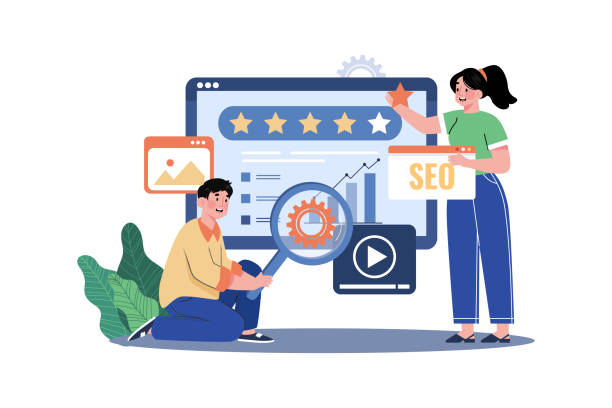
Content is king, and this principle is more evident than ever in user-friendly website design.
High-quality, relevant, and up-to-date content not only attracts users but also keeps them on the site and provides them with real value.
Your content should be clear, concise, and scannable.
Avoid long paragraphs and complex sentences.
Using subheadings, bulleted lists, and relevant images can significantly increase readability.
In addition to content quality, information architecture also plays a vital role in site usability.
Information architecture refers to organizing and labeling content in a logical and understandable manner.
A correct information architecture helps users easily find the information they need, without feeling lost or confused.
Creating logical categories, using clear labels for menus and submenus, and establishing a meaningful URL structure are all part of a strong information architecture.
A website with great content but poor information architecture is like a large library without a catalog; although it has rich resources, accessing them is difficult.
Therefore, in the process of user-centric website design, one must simultaneously think about creating valuable content and organizing it logically.
This combination guarantees an exceptional user experience that encourages users to return.
Did you know that 94% of the first impression of a company is related to its website design?
Rasaweb, by providing professional corporate website design services, helps you create the best first impression.
✅ Create a professional and trustworthy image of your brand
✅ Easier attraction of potential customers and improvement of online position
⚡ Get a free corporate website design consultation now!
Improving User Experience Through User Feedback

A user-friendly website design is a dynamic and continuous process that evolves through collecting and analyzing user feedback.
No matter how experienced a designer is, they cannot anticipate all user needs and expectations.
Therefore, receiving direct feedback from real users is crucial.
This feedback can be collected through various methods:
1.
Surveys and Feedback Forms: A simple tool for asking specific questions and getting general user perspectives.
2.
Usability Testing: Observing users while performing specific tasks on the website, which reveals design strengths and weaknesses.
3.
Heatmaps and Session Recordings: Analytical tools that show how users interact with your pages, where they click, and where they encounter problems.
4.
Web Analytics: Examining metrics such as bounce rate, time on site, navigation paths, and conversion rates, which provide valuable information about user behavior.
After collecting feedback, the analysis and action phase begins.
This data must be carefully reviewed to identify common patterns and problems.
Then, based on these findings, necessary design changes are implemented.
This process is a repetitive cycle: design, implementation, feedback collection, analysis, and redesign.
This iterative approach ensures that your website is continuously optimized to provide the best possible user experience and truly remains a user-friendly website.
Impactful Colors, Fonts, and Images in Design
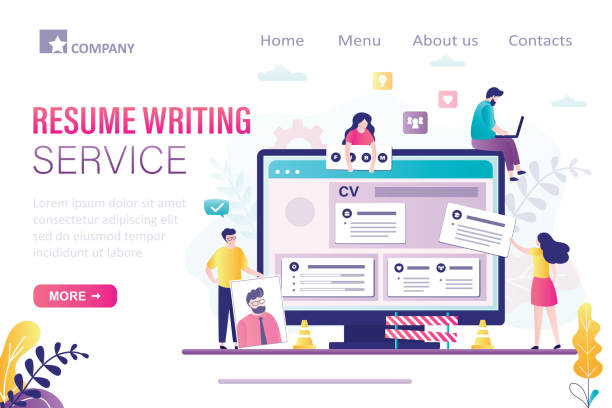
Visual elements play a very important role in shaping user-friendly website design.
Colors not only create visual beauty but also evoke different emotions and perceptions in the user.
Choosing an appropriate color palette that aligns with your brand identity and also has a positive psychological impact on users is crucial.
For example, blue conveys trust and calm, while red can transmit passion and excitement.
Fonts, in addition to aesthetics, directly affect readability and the overall user experience.
Choosing a highly readable font, especially for long texts, is of particular importance.
Font size, line-height, and the contrast of text color with the background are all factors that must be carefully considered to ensure your text is easily readable for every user and on every device.
Images and videos are also powerful tools for attracting attention, conveying information, and creating visual appeal.
Using high-quality images that are relevant to the content and optimized for the web (in terms of size) can significantly increase the site’s attractiveness.
These visual elements can not only reinforce textual content but also often act as primary communication tools, improving the overall user-friendly site experience.
Balancing visual appeal and performance (loading speed) is one of the important principles in this area.
Security and Privacy in Web Design
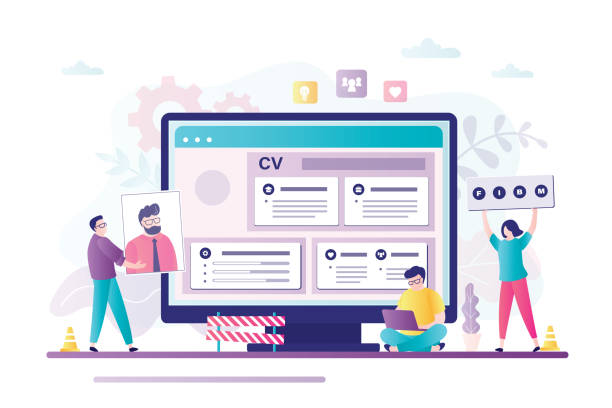
In the information age, security and privacy are fundamental pillars of user-friendly website design.
Users are becoming more aware every day and attach greater importance to protecting their personal information.
A website that does not comply with security principles or lacks transparency about how user data is used will quickly lose their trust.
The first step in ensuring security is to use HTTPS protocol.
This protocol encrypts communication between the user’s browser and the website server, preventing information eavesdropping.
Having an SSL/TLS certificate is not only essential for security but also positively impacts SEO ranking.
In addition to HTTPS, attention must be paid to the security of input forms, prevention of XSS and SQL Injection attacks, and the use of strong passwords and their proper management.
Also, a transparent and accessible Privacy Policy assures users how their data is collected, used, and stored.
This is not only a legal requirement in many countries (such as GDPR) but also crucial for building user trust.
A modern user-friendly website design should be built from the outset with security and privacy in mind so that users can safely use your services.
In the table below, you can see some key actions for security and privacy in web design:
| Security Measure | Description | Benefit for the User |
|---|---|---|
| Use of HTTPS/SSL | Encrypts communications between user and server | Protects personal information (passwords, credit cards) from eavesdropping |
| Secure Forms | Validates user input, protects against injection attacks | Prevents submission of malicious information, maintains data integrity |
| Transparent Privacy Policy | Explicitly states how data is collected, used, and stored | Increases trust, informs users of their data rights |
| Regular System Updates | Fixes security vulnerabilities in the software platform | Reduces the risk of hacking and unauthorized data access |
Call to Action (CTA) and User Conversion Processes

At the heart of every successful user-friendly website design, the ultimate goal is to convert visitors into customers, subscribers, or to perform a specific action.
This is where the Call to Action (CTA) plays a pivotal role.
CTAs are buttons or links that encourage users to take a specific action, such as “Buy Now,” “Sign Up,” “Read More,” or “Contact Us.”
Designing effective CTAs is an art and a science that requires attention to detail.
For an effective CTA, you should use clear and engaging text that highlights urgency or benefits.
The color and size of the CTA should be prominent and visible on the page, but not so much that it disrupts the site’s visual harmony.
The placement of the CTA on the page is also critical; it should be positioned where the user naturally sees it, usually after providing sufficient information for decision-making.
Conversion Funnels should also be designed simply and without friction.
Avoid unnecessary complexities in forms or payment processes.
Each step should be clear, transparent, and achievable with the minimum number of clicks.
Providing confirmation messages, options to save information, and the ability to return to previous steps all contribute to improving the user experience throughout the conversion process.
A user-friendly site, by optimizing CTAs and simplifying conversion processes, can significantly increase its success rate.
Is your company’s website as professional and trustworthy as it should be? With specialized corporate website design by Rasaweb, create an online presence that reflects your credibility and attracts more customers.
✅ Build a powerful and professional image for your brand
✅ Convert visitors into real customers
⚡ Get a free consultation now!
Web Accessibility for All Users
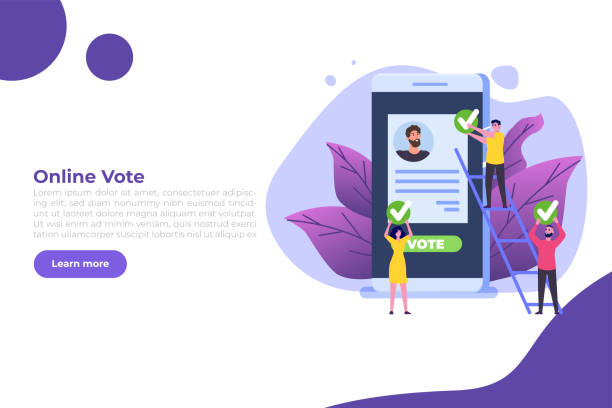
True user-friendly website design goes beyond general users and includes Web Accessibility.
Accessibility means designing websites so that individuals with different abilities (including people with disabilities) can fully access and use their content and functionalities.
This is a social responsibility and, in many regions, a legal requirement.
Global standards such as WCAG (Web Content Accessibility Guidelines) provide detailed guidance for this purpose.
Some key accessibility principles include:
1.
Providing Alternative Text (Alt Text) for Images: So that screen readers can describe image content for visually impaired users.
2.
Sufficient Color Contrast: To ensure text readability for individuals with visual impairments.
3.
Keyboard Navigation Capability: For users who cannot use a mouse.
4.
Subtitles for Audio and Video Content: For deaf or hard-of-hearing individuals.
5.
Simple and Clear Language: For users with cognitive disabilities or those for whom English is a second language.
By implementing these guidelines, you not only expand your audience reach but also show that you care about all users.
This approach transforms your website into an inclusive space that is accessible to everyone and ensures a positive experience for all individuals.
User-friendly website design ultimately means designing for all people.
The Future of User-Friendly Website Design and Emerging Trends

The world of web design is rapidly changing, and user-friendly website design is no exception.
Emerging trends hold great potential to revolutionize user experience and create more engaging interactions.
One of these trends is AI-powered Personalization.
Using user data and AI algorithms, websites can dynamically adjust their content, products, and even layout based on each user’s preferences and behavior.
This elevates the user experience to an unprecedented level of relevance and satisfaction.
Voice UI and chatbots are also growing in popularity, allowing users to interact with websites in more natural and intuitive ways.
These technologies are highly user-friendly, especially for mobile users and those who prefer to speak rather than type.
Micro-interactions, which are small details like feedback animations when clicking a button or moving the mouse, are gradually becoming a standard part of modern designs.
These small details give the website a sense of dynamism and responsiveness, making the overall user experience more enjoyable.
Do these new trends mean the end of traditional visual design? It seems the future of user-friendly website design lies in a combination of traditional aesthetics and technological innovations that constantly strive to create a deeper and more efficient connection with users.
Designers must continuously learn and adapt to these changes to provide the best digital experiences.
Frequently Asked Questions
And other services of Rasaweb advertising agency in the field of advertising
Smart Conversion Rate Optimization: A fast and efficient solution for digital branding with a focus on attractive user interface design.
Smart Direct Marketing: An effective tool to increase sales with the help of marketing automation.
Smart Sales Automation: Professional optimization to increase click-through rates by using real data.
Smart Link Building: A professional solution for analyzing customer behavior with a focus on using real data.
Smart Data Analysis: A dedicated service for increasing website traffic based on intelligent data analysis.
And over hundreds of other services in the field of internet advertising, advertising consultation, and organizational solutions
Internet Advertising | Advertising Strategy | Advertorials
Resources
Principles of User-Friendly Website DesignThe Importance of User Experience (UX) in Website Success7 Key Tips for Professional Website DesignHow to Design a Site with an Excellent User Interface?
? In today’s competitive world, a powerful online presence is the key to success. Rasaweb Digital Marketing Agency, by offering comprehensive services including fast website design, SEO, and social media management, elevates your business to new heights. For a free consultation and to learn more about our services, contact us today. 021-91097325
📍 Tehran, Mirdamad Street, next to Bank Markazi, Kazerun Jonoubi Alley, Ramin Alley No. 6
